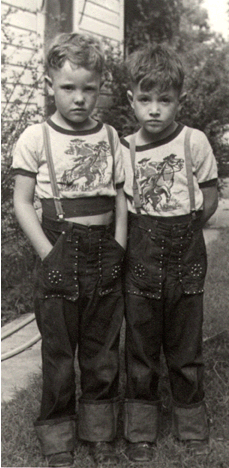
Three Ways
First Insight
When we examine the relationship between self and other, we discover that we can choose actions that result in our being worse off, actions that result in our being unchanged, or actions that result in our being better off. We can choose to hurt each other, we can choose to ignore each other, or we can choose to help each other.
It was as a child on the school playgrounds of rural America in the 1950's that I first learned of these three choices first hand. My twin brother and I were seven years old when our Dad was transferred to a new job and our family moved to the small community of Palco, Kansas. We arrived there after the start of the school year, and soon found ourselves threatened by the established group of boys at our new school. For reasons unclear to me then, conflict seemed almost constant, and real knock down battles occurred all too frequently.
One of my strongest childhood memories is of fear and running. A pack of boys are chasing me and my brother. If they catch us, they will beat us up. I am very tired. We have been running for nearly thirty minutes. My heart is pounding so hard I can hear little else. Perspiration fills my eyes making it difficult to see. A hundred yards ahead my twin brother is running easier. He is taller and a great runner. The pack cannot catch him. But, they are getting closer to me. Recess is almost over now, if we can just hold out until the bell rings, we will escape back into the safety of the classroom. But our escape will be short-lived.
I remember dreading every recess – every lunch hour.
Just like in boxing, at the sound of the bell we would all come out fighting. At every recess, the war would resume.
